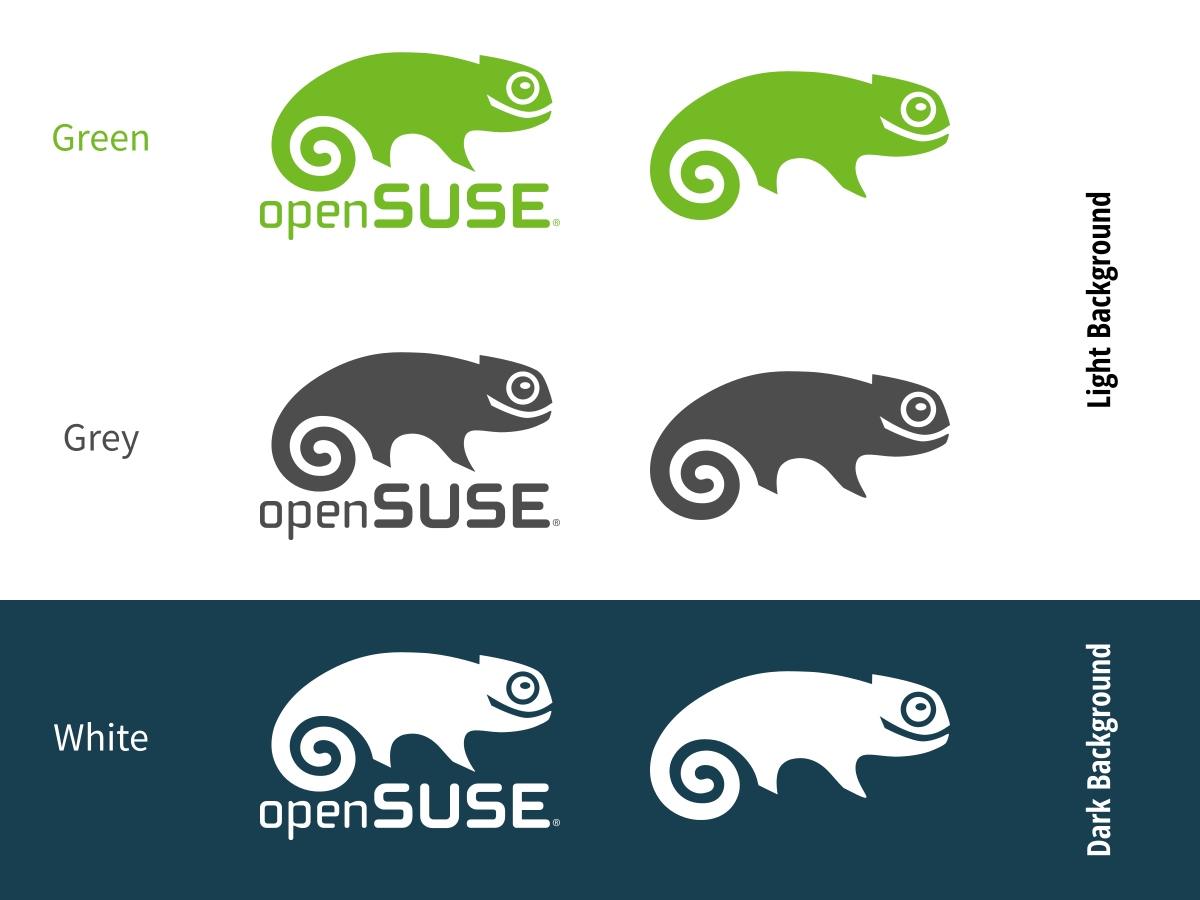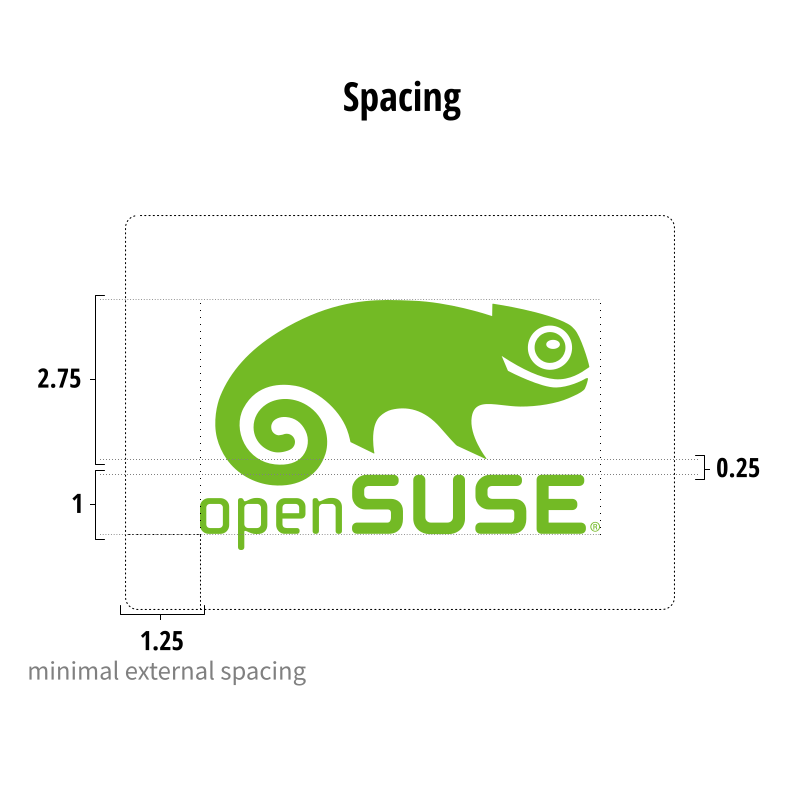openSUSE:Artwork brand
Official logo is strictly defined, but derivatives are not limited with that.
Trademark
Please refer to the openSUSE Trademark guidelines if you want to redistribute openSUSE-based projects with openSUSE logos.
Logo
The openSUSE Linux distribution is identified by the Geeko chameleon which can be accompanied by the openSUSE logotype.
Please note that:
- openSUSE must have a registered trademark symbol (R).
- There must also be a registered trademark symbol (R) next to the geeko image. Typically this is placed small, next to its front foot.
The openSUSE green is #73ba25 or (115, 186, 37) in the sRGB space. When printing, use the Pantone Uncoated #368 green.
When using the logo on top of textured or colored background, use the monochrome version of the logo. The openSUSE green should only be used on white backgrounds.
There should be sufficient whitespace around the logo. Avoid placing the logo close to other elements such as photos or text paragraphs.
Things to Avoid
- Do not use a custom font for the logotype
- Do not use other color treatment than openSUSE green or shades of gray.
- Do not change the layout of the logotype in relation to the chameleon graphic.
- Do not mix the logo with other graphical elements such as emblems to create derivate project logos.
- Do not stretch, skew the logo. Always keep the aspect ratio intact when resizing.
Download
Buttons
The geeko head is the secondary identity. The round button can be freely colored and combined with other graphical elements to form spinners or project logos. It is also allowed to give it custom color treatment.
A typical use for the Geeko button is for openSUSE related projects.
All of the buttons are available in both SVG and PNG form on Github








